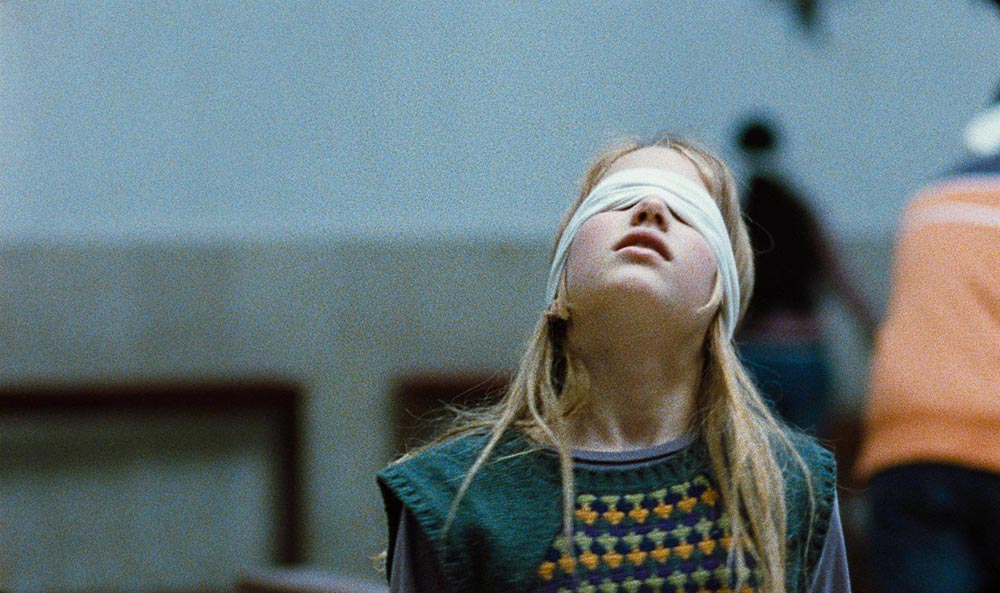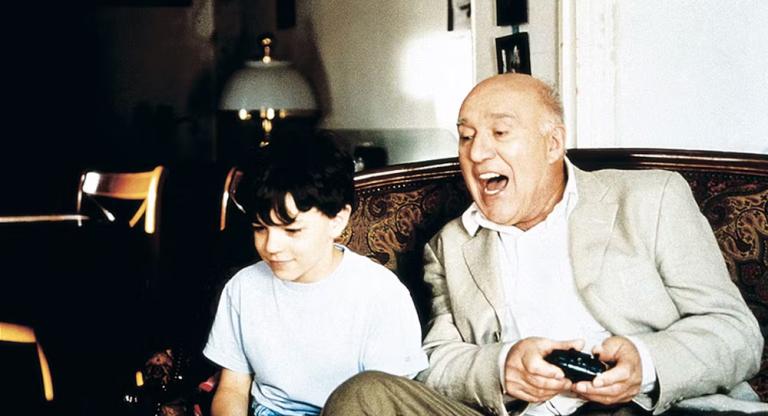The symbolism of the title for Alice Rohrwacher’s Corpo Celeste (2011) is made explicit early in the film, in the midst of 13-year-old Marta’s Confirmation class. An acned preteen asks Santa, the down-to-earth Catechism teacher, whether the body on the new, soon-to-be-delivered crucifix is life-size—”all of it?”—to much tittering. Santa explains with sincerity that Jesus’ body is “different from ours. It’s a spiritual body: heavenly, holy.” The camera cuts to young Marta, intently studying her chest in a bra pilfered from her older sister.
The film takes place in Reggio Calabria, a bleak industrial graveyard whose official neglect is perhaps best exemplified by the A3 highway connecting it to tourist-friendly Salerno that took over 52 years to complete. Marta, her mother, and older sister Rosa have just moved back after living in Switzerland. While Mom works brutal bakery hours and Rosa cavorts with her local boyfriend, Marta escapes to the terrace of their poorly-lit apartment building—to be alone and to contemplate her new surroundings. A woman in knee-high boots hangs laundry on a nearby rooftop; a septet of grandmothers rhythmically rehearse church hymns in an alley; a trio of boys sift through piles of discarded furniture and faulty appliances, stealing away with treasures tossed in the back of a mini-truck.
The film is rife with visual and narrative allegories like the one described above. The “man born blind” game Santa initiates to teach the youths about Jesus’ miracles leads to a darkly comedic scene of bored teenagers stumbling blindfolded in the nave, bereft of meaningful spiritual guidance. When Don Mario pauses his evening studies to plug in his flip phone; or little niece Debby stares mesmerized at a recording of herself performing the strikingly suggestive “dance of the virgins” in preparation for the Confirmation ceremony; or, most poignantly, Santa throws herself onto Don Mario’s unmade bed upon learning that he’s seeking a transfer; the implicit critique of the Church’s corruption simmers away into something more intimate and, perhaps, forgiving.
Marta’s impassive, compelling visage behaves much like the camera, witnessing these banal tragedies and petty humiliations without comment. Scenes in which Marta doesn’t appear seem to flow naturally from the same perspective, as though we remain within her imperturbable presence. Rohrwacher told Sight & Sound that the title Corpo Celeste was lifted from a collection of essays by Anna Maria Ortese, saying, “I was struck by Ortese’s image of the Earth itself being a celestial body, suspended in space.” While there is undoubtedly cynicism in Don Mario’s rather perfunctory suggestion that the church needs to “propose extraordinary events” in the face of the “uncertainty, instability” of the world, the film doesn’t condemn this exhortation for miracles so much as suggest they are happening through no effort (or fault) of the church.
Filmed in tactile, blue-tinged yet vital Super 16mm, Corpo Celeste establishes the documentary-like naturalism—with moments of the magical—Rohrwacher and the legendary cinematographer Helénè Louvart further develop in The Wonders (2014) and Happy as Lazzaro (2018). It serves as a moving entry in the tradition of women directors’ debut films exploring a girl’s coming of age.
Corpo Celeste screens tonight, April 19, at Nitehawk Prospect Park in 35mm.


